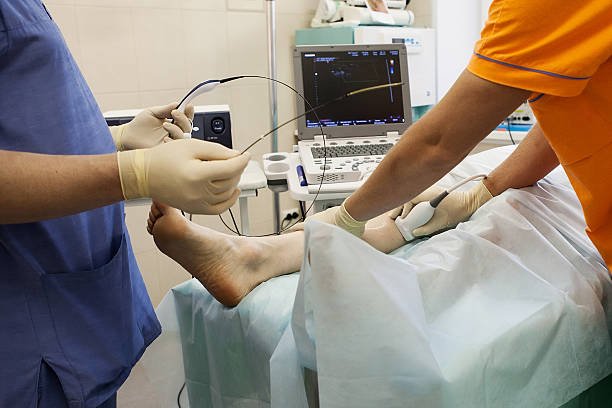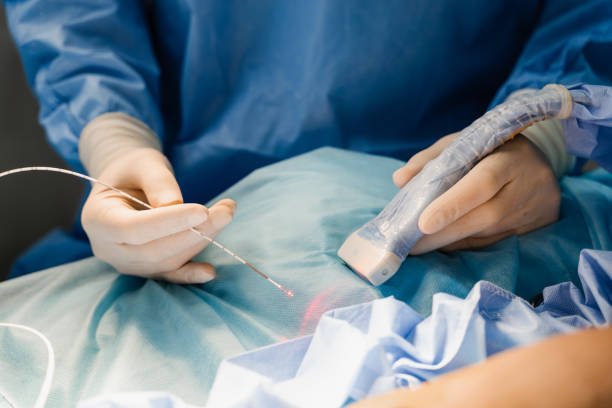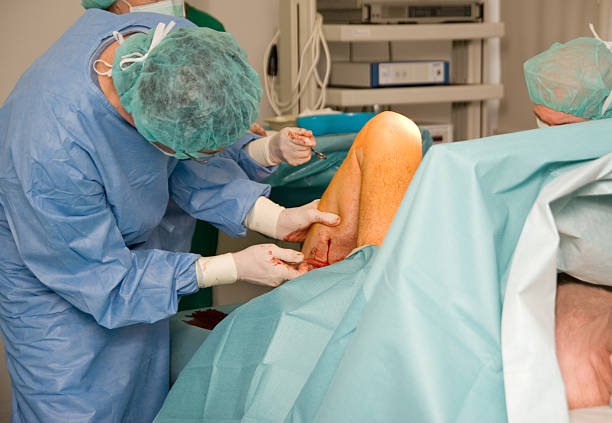
Varicose Vein Surgery: Types of Surgery, Procedures, Pre- and Post-operative Instructions
Varicose veins are when the valves in the veins do not work properly, preventing blood from flowing normally, causing the veins to become twisted, dilated, or darkened. Varicose veins most commonly occur in the legs, but can occur in veins anywhere in the body. Pregnancy or standing for too long can cause or worsen varicose veins.
Generally speaking, varicose veins with mild symptoms can usually be relieved by wearing compression stockings. If the symptoms are more severe and obvious bulging of blood vessels can be seen, surgical treatment may be considered. In addition, surgery can improve the appearance of the affected area and avoid potential complications.
Types of varicose vein surgery
If your doctor recommends varicose vein surgery, you may have the following options:
Traditional surgery
Traditional surgery involves high ligation and removal of the great or small saphenous vein. The doctor will first give the patient general or local anesthesia, then make a small incision in the patient’s groin, and another incision next to the knee or ankle, then cut off and ligate the vein, and then use a wire to enter from the distal end of the vein, from the groin to The proximal end of the vein is stretched out and a knot is tied at the distal end of the vein to fix the extractor. Finally, the lead is connected to the entire vein through the incision in the groin.
This surgery is mainly used for more severe and large-scale varicose veins. However, it takes a long time and the patient’s recovery period is also long, so it is rarely used now.

Endoscopic surgery
Like traditional surgery, veins are extracted, but endoscopic surgery causes smaller surgical wounds. Before the advent of vein closure surgery, endoscopic surgery was a relatively low-risk surgical method. In the treatment of varicose veins, endoscopic surgery is currently rarely used.
Laser/radiofrequency endovenous closure surgery and intravenous glue
Endovenous closure surgery is a type of catheter surgery. The doctor will make a small incision in the leg, use an expander to open the blood vessel, insert the catheter sheath, extend the catheter into the blood vessel, and guide it to the varicose vein site. In this process, ultrasound is used to see whether the catheter is in the correct position. Once it is positioned, laser or radio frequency energy can be used to perform an action called cauterization or ablation. The blood vessels will close and fibrosis, and the patient’s blood will then be diverted to other healthy blood vessels, and the varicose veins will improve.
Endovenous closure surgery usually only requires local anesthesia and takes a short time. Patients can return to normal life immediately after the surgery. It is now the mainstream surgery for the treatment of varicose veins.
In addition, there is a newer application method of catheter surgery. By injecting “venous glue” into the veins through the catheter, the varicose veins can be closed and blood will no longer accumulate inside.

Epidermal laser treatment
In addition to being applied inside blood vessels, laser can also be used directly on varicose veins on the surface of the skin outside the body, causing the blood vessels to shrink and eventually be absorbed by the body. The advantage of this treatment is that it eliminates the trouble of using a catheter to enter the blood vessel and the obvious wound. Epidermal laser therapy, like sclerotherapy injection, is mostly used for patients with mild, superficial varicose veins, such as spider varicose veins, and is less suitable for treating deep-seated varicose veins.
Minimally invasive phlebectomy
Or microphlebectomy. It is usually performed when there are one or more local superficial varicose veins in the calf. The doctor will use an instrument to penetrate the skin to lift and remove the problematic veins close to the surface of the skin. The wound of this kind of surgery is small and fast, but it is not suitable for a large range of varicose veins, and the probability of postoperative recurrence is high. Therefore, it is more suitable for local varicose vein treatment, or as a vein extraction or closure surgery. As an assistant, remove the remaining small varicose veins.
What you need to know before surgery for varicose veins
Any surgery carries risks, and it is important to understand the preoperative risks and potential postoperative complications before surgery. Please follow your doctor’s instructions to prepare for surgery, such as fasting and stopping certain medications. If you have any questions, please consult your doctor or surgeon. Possible complications of varicose vein surgery include:
- Unexpected allergic reaction to anesthesia
- Excessive bleeding or formation of blood clots, which may cause deep vein thrombosis
- Leg swelling and lumps growing at the wound site
- Feeling numb or tingling
- Nerve damage
- Microvascular dilation
- Causes major damage to major arteries, veins, or nerves in the legs
- Recurrence of varicose veins after surgery

Postoperative recovery for varicose veins
Depending on the type of surgery performed, recovery time after surgery will vary. Traditional surgery may require hospitalization for 3 to 5 days, but minimally invasive varicose vein surgery does not require hospitalization. You can walk normally and return home on the day of surgery. The recovery period is about 2 days. As long as the wound heals and there is no longer pain, you can engage in normal activities and work. Regular exercise can help speed up your return to normal life, but before you start exercising, ask your doctor for advice.












